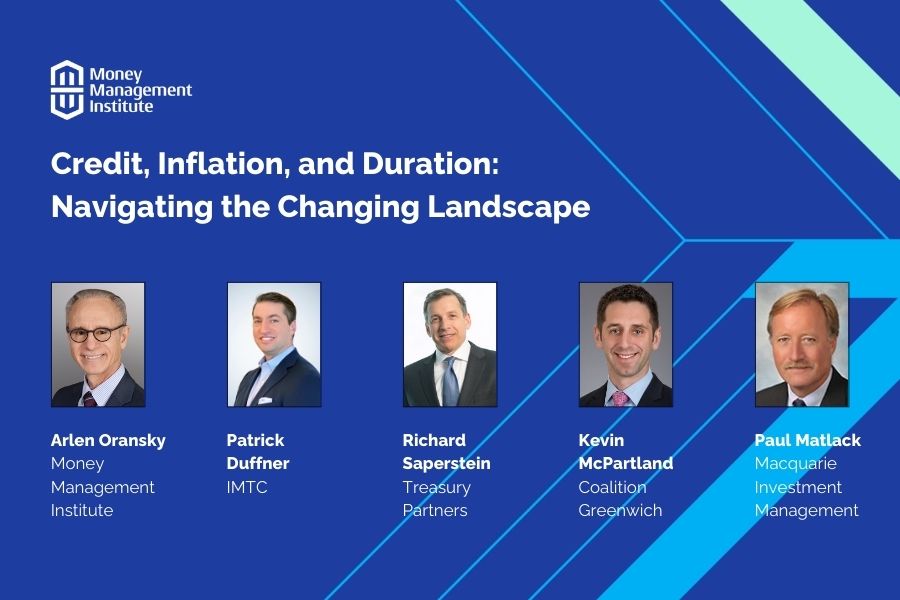The 2021 Outlook for Fixed Income

As COVID-19 vaccines are now being approved and rolled out in a number of countries, the world is hopeful that the pandemic will be largely under control and life will be getting back to some semblance of normal by Q3 2021. Although the U.S. stock market showed remarkable strength in 2020, expectations are that the overall U.S. economy, along with the economies in the U.K., Europe and other developed countries, will not be able to fully recover until that sense of “back to normal” has largely returned. Some countries, in particular China, are in the lead in that regard – manufacturing in China has already shown impressive growth – while some industries such as travel and tourism are likely to lag, keeping unemployment uncomfortably high in the U.S. All of this points to an uneven recovery in 2021.
In this article, we provide our outlook for different segments of the bond market, based on the views we collected from various experts.
Want to read our updated piece for 2022? Read our 2022 bond market outlook here.
Government bonds: Expect low rates to persist
Most market observers expect strong growth in the U.S. economy in the second half of 2021, perhaps as early as late Q2, and we are inclined to agree. This growth is expected to push real yields lower as the Fed, and other central banks in most parts of the world, seek to keep nominal yields low even if inflation expectations rise. While trying to predict the Fed’s next move is the fixed income professional’s favorite pastime, Chairman Powell and his colleagues have made it less of a guessing game by repeatedly stating that the Fed is committed to keeping short-term rates near zero for the foreseeable future.
The Fed recently pledged to continue purchasing Treasuries ($80bn/month) and mortgage-backed securities ($40bn/month) “until substantial further progress has been made” toward broader employment and inflation goals. In comments made after the Fed’s December meeting, Chairman Powell declined to state the specific levels of inflation and unemployment that would trigger a change in those purchases, but said the economy was “some ways off” from reaching the Fed’s goals. Unless something dramatic happens, the Fed is not expected to raise short-term rates before mid- to late 2023 based on current projections, and any signs of inflation will be tolerated more than in the past.
What does this mean for investors? The yield curve may steepen as signs of economic recovery may lead to a risk-on mentality, leading some investors to shift money out of safe haven Treasuries into credit or other, riskier asset classes. For example, Goldman forecasts that 10-year Treasury yields will reach 1.3% by the end of next year, and others have pushed those predictions higher. In contrast, some strategists (such as Northern Trust) expect rates in the U.S. to decline as the rest of the world takes longer to recover, keeping demand for U.S. Treasuries strong. With inflation limited and the Fed committed to keeping short-term rates near zero, we agree with those who expect rates to move higher, but not by much. As ultra-low rates have pushed durations longer, there is little upside and meager compensation for holding long maturities and many are advising an underweight in government bonds.
Credit: Little appeal in traditional corporates
The U.S. economy has shown a great deal of resilience since the early days of the pandemic. Although unemployment remains high, the second round of fiscal stimulus from Congress is (finally) on the way. Those who remain employed have generally strengthened their households’ finances; U.S. personal savings rates remain unusually high, given that there are fewer places to spend discretionary income. This suggests a positive outlook for corporate borrowers’ balance sheets, as consumers are expected to increase spending, perhaps with gusto, when the pandemic subsides. This will be particularly important in certain industries, such as airlines and hotels, which are struggling to survive.
Given the low-interest-rate environment, corporations issued substantial amounts of long-term debt in 2020, locking in historically low borrowing costs. New issuance is expected to taper off, perhaps significantly, in 2021. Low rates and the increased amounts of long-maturity debt have pushed the duration of the Bloomberg Barclay’s U.S. Corporate Bond Index to an all-time high.
What does this mean for investors? With credit spreads already tight, there is little upside and substantial downside for corporate bond investors. If Treasury yields increase as expected, corporate bond yields would likely increase, as there is little if any room for spreads to narrow further (although we cannot rule out the possibility). Even at current levels, spreads offer relatively little compensation for investors in the event of an increase in default risk, and with durations so long, many are advising investors to stick to intermediate maturities or shorter and to maintain a neutral weight or slight underweight relative to a benchmark.
Given these conditions, we see few strategists recommending investment grade corps; most see either high yield or emerging markets (see below) as the only credit sectors that can offer yields that may appeal to investors as the current level of rates and spreads, and only place value can be found, given how far rates and spreads have come in since widening in March. Of course, investors’ relentless stretch for yield adds risk as investment policy restrictions are changing to allow for increased risk exposure. We can see this taking hold but not ending well.
Municipals: The environment looks favorable
Overall, conditions in the muni market appears to be favorable as we enter 2021, although there are some headwinds to consider. Fundamentals will depend on how long the economy takes to recover from the pandemic, as that will dictate the tax revenues that states and local governments generate. The first half of 2021 looks to be challenging as the pandemic rages in some states, but most forecasts expect improvement by the second half of the year. As a result, defaults in the muni sector may increase slightly, but there does not appear to be a systemic threat on the horizon.
The outcome of the run-off election in Georgia for that state’s Senate seats, which is unknown at the time of publishing, could have a notable impact on muni yields. The conventional wisdom is that if the Republican Party wins at least one of those races, thereby retaining control of the U.S. Senate, personal income tax rates are unlikely to increase over the next two years. However, if the Democrats win both seats the tax-exempt muni market would likely see increased demand from investors who would anticipate higher tax rates.
As the incoming administration has committed to spending to update the country’s aging infrastructure, new issuance in the muni sector could reach an all-time high in 2021. However, the net supply increase is likely to be fairly small as callable tax-exempt issues are likely to be replaced by taxable issues. Given steady demand, many experts believe spreads on investment grade munis could tighten in the first half of 2021.
What does this mean for investors? Based on expectations for higher Treasury rates, yields on municipal bonds are likely to increase in 2021. However, healthy demand may cause spreads to narrow, boosting total return. A strong economic recovery in the latter half of the year would increase state and local tax receipts, improving creditworthiness for both taxable and tax-exempt munis, including high yield issues.
Emerging Markets: A potential bright spot
A strong economic recovery and a lifting of travel restrictions are likely to provide a large boost to emerging economies that depend heavily on tourism and remittances. The weakening of the U.S. dollar against major currencies, which is expected to continue in 2021, will help emerging market countries that have issued debt denominated in USD.
What does this mean for investors? Both of these forces are expected to provide support for emerging market debt. Local currency bonds should become more attractive both in terms of credit quality and in terms of the potential benefits from converting the local currency back to a weaker U.S. dollar. Debt issues denominated in dollars will be easier for emerging economies to service as their currencies and economies strengthen.
Risks fixed income investors should consider in 2021
Although optimism abounds as vaccinations ramp up, there are still considerable unknowns that could counter the expectations described above. For example,
- Consumer demand – Consumers may take longer than expected to get comfortable with “normal” activities such as working in a crowded office, going to restaurants, attending live events, taking cruises, or going to theme parks. If that happens, the demand rebound that many businesses are counting on may not materialize in 2021 meaning spreads on corporate bonds could widen and Treasury yields could retreat (again).
- Business travel – In the business segment of the economy, travel may take years to rebound as meeting by videoconference has become the new norm. That would hit the rental car business, which has been devastated, along with hotels that cater to business travelers. Muni tax receipts associated with business travel (such as convention fees, hotel taxes, etc.) would fail to recover and businesses that cater to business travelers would not be able to rehire laid-off workers, keeping unemployment higher than expected.
- Remote work – Unemployment, particularly for low-wage workers, may not decline all that quickly. If companies continue to allow employees to work from home, at least part-time, the restaurants and retailers located in business districts will also not be able to rehire workers. Demand for public transportation, and associated revenues will suffer, leading those budgets to be cut and layoffs for many of their workers may become permanent. Some cities, like New York, may take many years to recover their pre-pandemic tax base.
- Lack of support for states – There may be no Federal money flowing to state and local governments in the near future, which would hurt municipal fundamentals. Furthermore, even though the Municipal Liquidity Facility created by the CARES act was barely used, its mere existence may have provided benefits to the muni market. A lack of federal stimulus money and the end of that liquidity facility could hurt that market.
- End of liquidity backstops – Similarly, with the Primary and Secondary Market Corporate Credit Facilities ending, the Fed will no longer be able to support liquidity in the corporate bond market. Although the Fed’s corporate bond purchases dwindled in the second half of 2020 and there does not appear to be reason for concern about liquidity in the corporate bond market, the end of Fed purchases could have some effect.
When asking where bond investors should put their money in 2021, we are reminded that bond allocations are intended to dampen the volatility associated with the equity portion of a portfolio, not with an eye toward hitting a home run. While some bond managers promote relative value trading using bond ETFs, investors should keep in mind the risks ETFs present when sell orders exceed buys and the ETF has to sell some of its bond holdings. The most liquid, most in-demand bonds in the ETF basket attract buyers first, leaving the ETF’s remaining investors holding somewhat equivalent but less desirable issues. Any rush for the exit leaves those who cannot sell early enough with more than their share of losses.
Bonds offer better than money market returns but in today’s low rate environment, taking on interest rate risk by extending duration in order to pick up a handful of basis points in yield, or going down in credit quality into high yield bonds, will likely introduce more volatility for investors in 2021. This calls for patience, a long-term view, and a clear understanding of fixed income’s role in a diversified portfolio.
Technology is only as good as how it is used. IMTC is designed by and for fixed income professionals, empowering them to take action and make decisions quickly and accurately with real-time data and analytics capabilities. It allows you to future-proof your business; driving operational efficiencies, mitigating risk and delivering performance, to ultimately enable business growth.
This paper is intended for information and discussion purposes only. The information contained in this publication is derived from data obtained from sources believed by IMTC to be reliable and is given in good faith, but no guarantees are made by IMTC with regard to the accuracy, completeness, or suitability of the information presented. Nothing within this paper should be relied upon as investment advice, and nothing within shall confer rights or remedies upon, you or any of your employees, creditors, holders of securities or other equity holders or any other person. Any opinions expressed reflect the current judgment of the authors of this paper and do not necessarily represent the opinion of IMTC. IMTC expressly disclaims all representations and warranties, express, implied, statutory or otherwise, whatsoever, including, but not limited to: (i) warranties of merchantability, fitness for a particular purpose, suitability, usage, title, or noninfringement; (ii) that the contents of this white paper are free from error; and (iii) that such contents will not infringe third-party rights. The information contained within this paper is the intellectual property of IMTC and any further dissemination of this paper should attribute rights to IMTC and include this disclaimer.





